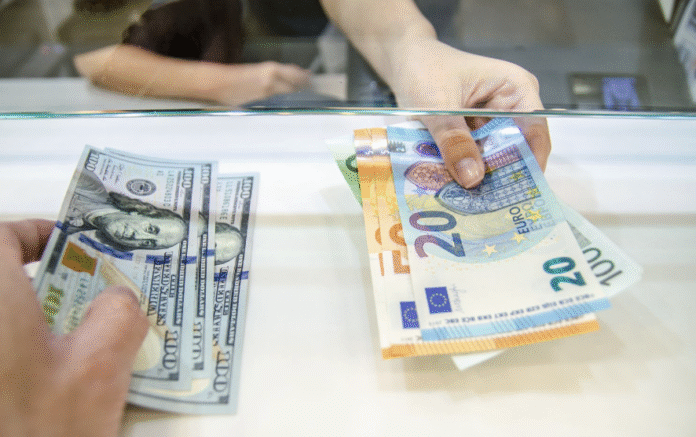Currency exchange rates are often seen as the domain of economists, global investors, and multinational firms. Yet, in a connected world, the fluctuations of currency values impact almost everyone’s everyday life—shaping what is paid for food, fueling travel dreams or frustrations, influencing job opportunities, and even affecting how much gets saved or spent on a daily basis. Understanding exchange rates is no longer an abstract exercise, but a practical part of thriving in today’s global community.
What Are Currency Exchange Rates?
In the simplest terms, a currency exchange rate tells how much one country’s currency is worth compared to another’s. For instance, if 1 US dollar equals 150 Japanese yen, that is the exchange rate between the two countries. Rates constantly fluctuate, influenced by economic conditions, government policies, investor perceptions, and global events. These numbers are tracked second by second on international markets and can change drastically from one day to the next.
How Exchange Rates Affect the Cost of Living
Exchange rates play a direct role in determining the prices consumers pay for imported goods and services. When a country’s currency becomes stronger (appreciates), imported goods become cheaper. Conversely, if the currency weakens (depreciates), imports cost more. This can affect:
Grocery store prices: Many staples—such as coffee, fruit, electronics, and clothing—are imported from abroad. If the local currency weakens, these products become more expensive for local consumers.
Fuel costs: Oil is largely traded in US dollars. A weaker domestic currency means paying more for every gallon or liter of gasoline, which can raise transportation and manufacturing costs and, ultimately, ripple through the economy.
Impact on Travel and Tourism
Travel is one of the most obvious ways people encounter exchange rates daily. A strong currency makes international destinations cheaper, allowing visitors to afford more on their trips. In contrast, a weaker currency means foreign travel (or even international studies) require more local money for the same experience. For example, a tourist from Europe with a strong euro visiting the United States will find shopping, dining out, and hotel stays more affordable than if the euro had fallen in value against the dollar.
Salary, Jobs, and Remittances
Exchange rates shape job opportunities and wage competitiveness, especially in export-driven sectors. When a country’s currency is weak:
Local goods become cheaper for foreign buyers, increasing export demand and potentially supporting more jobs at home.
Foreign companies may be attracted to invest in or outsource work to that country thanks to lower operational costs.
Conversely, those working abroad and sending money home (remittances) will find that the amount their families receive in local currency depends on exchange rates. A favorable rate can mean more money for families back home, while an unfavorable shift may reduce their value.
Investments and Household Finances
For investors, exchange rates play an essential part in returns. International stocks, mutual funds, and properties may gain or lose substantial value due to currency swings. Even if an investment in the US market grows by 10%, if an overseas investor’s home currency strengthens significantly against the US dollar, they might find their actual profit much less than expected once the currency is converted.
Even savers who do not invest abroad can be affected. Higher costs for imported goods can raise inflation, diminishing the real value of savings and making it harder to plan for the future.
Tech, Gadgets, and Everyday Products
Exchange rates affect all globally sourced goods: smartphones, laptops, cars, and home appliances. Manufacturers often adjust retail prices or release new devices at specific times because of currency stability. Sudden devaluations can make the latest gadgets significantly more expensive or lead companies to delay launches in a given market.
The Bigger Picture: Economic Growth and Jobs
On a macro level, the exchange rate influences a country’s balance of trade—exports versus imports. A stronger currency can hinder export competitiveness but allows for cheaper imports, contributing to trade deficits. A weaker currency boosts exports but raises the cost of imported goods, potentially leading to inflation. These dynamics affect job creation, economic growth, and ultimately, everyone’s standard of living.
Everyday Adaptations
With so much riding on exchange rates, individuals and businesses adapt in numerous ways:
Travelers track exchange rates for favorable windows to book trips or change money.
Shoppers look for locally made alternatives if imported goods get too costly.
International students and migrant workers send remittances during ‘better’ exchange rate periods.
Businesses hedge currency risks when importing and exporting to minimize financial loss.
Real Life Example: The Coffee Connection
Imagine buying coffee grown in Brazil but brewed in Berlin. If the euro weakens against the Brazilian real, roasters in Berlin must pay more euros per kilogram of coffee, increasing your morning cup’s price. Multiply this scenario across every product sourced internationally—from bananas to cars—and the everyday impact of exchange rates becomes clear.
Technology to the Rescue
Today, apps and online calculators let everyone, from CEOs to backpackers, track exchange rates in real-time, compare prices, and make financial decisions instantly. Digital banking makes it easier to access multicurrency accounts, providing more ways to manage global money efficiently.
Conclusion
Currency exchange rates are not just an abstract number scrolling across news tickers—they shape what is bought, where people travel, the jobs available, and what gets saved for tomorrow. As the world becomes increasingly interconnected, understanding and paying attention to exchange rates empowers everyone to make better choices and weather global economic changes with greater confidence, no matter where life leads.


